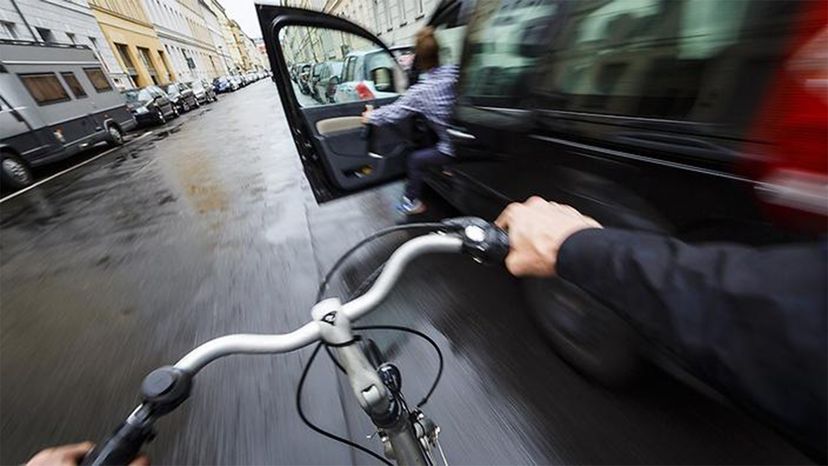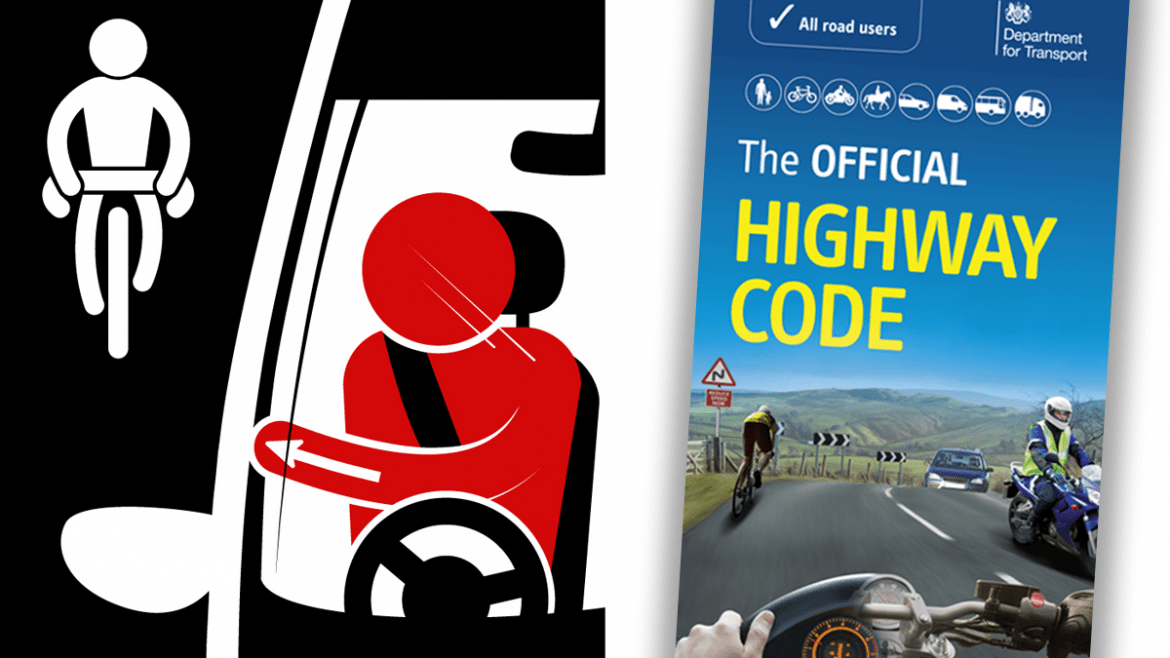The Dutch Reach, which was implemented in the Highway Code of UK’s Department of Transport on 29 January, could fine drivers up to £1,000 for opening the car door with the wrong hand.
The Dutch Reach requires drivers to use the hand furthest from the door to open it. The technique makes the driver turn their head and look over their shoulder.
The practice is widely used across Europe as a measure to protect cyclists, pedestrians and other road users.
The term was first coined by Michael Charney, who is a former American physician and cycling enthusiast from Cambridge, Massachusetts. In 2016 he launched the website dutchreach.org, after a 27-year-old nursing student Amanda Philips died after a dooring accident near his home.
“It does not seem to have travelled beyond Northern Europe until this century, when Russell Shorto first wrote about it in the New York Times,” Charney told the Kingston Courier.
“It might have been brought over before by bike advocates or aficionados who discovered it when visiting the Netherlands or Denmark.
“It seems [the technique] had to get into the English language and get published and noticed, which finally happened with my active “marketing” of it with the name ‘Dutch Reach’.”
The new section under rule 239 in the Highway Code reads: “Where you are able to do so, you should open the door using your hand on the opposite side to the door you are opening; for example, use your left hand to open a door on your right-hand side.
“This will make you turn your head to look over your shoulder.
“You are then more likely to avoid causing injury to cyclists or motor cyclists passing you on the road, or to people on the pavement.”

The term was first mentioned in a UK newspaper in an open letter published in The Guardian on December 16 2016.
The Dutch Reach was first campaigned for in the UK by Cycling UK, following the tragic death of the 26-year-old Leicester school teacher Sam Boulton, who crashed into a car door in July 2016. The organisation asked for the technique to be introduced in driving tests.
Cycling UK’s campaigns manager Keir Gallagher said that car dooring is one of those problems which really should not exist.
“A quick check before exiting a vehicle will easily eliminate any risk to passing cyclists or motorcyclists – and yet time and again we see drivers and passengers swinging their doors open carelessly, and putting lives at risk,” he said.
In 2019, there were 248 accidents that involved injuries due to a vehicle door being opened or closed negligently, according to Government statistics. Four of those accidents caused fatal injuries and a further 65 caused serious injuries.
History of the far hand method
Carney said that in the Netherlands, the method is merely known as the way you open the door. New drivers are taught this movement as a matter of course in drivers’ education.
“The technique emerged in response to the 50s to 70s road death that numbered in the thousands across the Netherlands, said to be the worst in all of Europe at the time,” Charney said.
Road deaths numbered in the thousands. In 1971 alone, 3,300 people died in car-related accidents – over 400 of them were children under the age of 14.
A movement against car-related biking accidents started with the tragic death of a child of De Tijd’s editor Vic Langenhoff. Subsequently, Langenhoff published an article with this headline “Stop de Kindermoord” (“Stop the child murder”).
A national campaign “Stop de Kindermoord” focused on increasing the roads safety, especially for children, followed.
Amsterdam soon became the bicycle culture of the world through the building of separated bike paths next to streets, making biking as safe and attractive for everyone.

“The ‘Reach’ practice has faded from practice since then as Dutch road culture and infrastructure transformed, making safety for all the norm and reality,” Charney said.
“It is such a common practice in The Netherlands that they assumed people in other countries opened the car door the same way. So why point it out?”
Dutch newspaper AD said in an article last month that ‘most Dutch motorists will not understand what is meant by the Dutch trick, but it is widely known abroad’.
One reader, Johan van Blokland, commented: “I once learned this from my driving instructor. And I can’t imagine my instructor was the only one at that time: about 50 years ago.”
Another reader, Jeroen Bakker, said: “I have not been able to find out whether this method is really Dutch. There are also suspicions of Danish descent, but I can’t find that in the archives. However, I have been able to find the method in Dutch newspapers since 1961.”
Charney said: “When The Netherlands became the bike mecca of the world, perhaps the Dutch people didn’t think of sharing “how to open a car door”. The declining, older Dutch practitioners might have thought it so common as to be unremarkable, and tourists wouldn’t likely have noticed it on their own.”
How The Dutch Reach came to the UK
The growing presence of bicycles, mopeds, scooters and other forms of ‘active transport’ and vulnerable road user injuries and death have helped The Dutch Reach to be introduced in UK’s Highway Code, according to Charney.
A poll carried out by Censuswide in 2019, based on 2,000 British adults, suggested that in the UK only 12 per cent of people were aware of the technique, with those surveyed admitting they thought it was a type of Dutch beer (22 per cent), a handshake (19 per cent) or a yoga pose (15 per cent).
UK tabloids also ridiculed the method and favored motor vehicle users also delayed Dutch Reach being appreciated by Brits.
Yet, after years of campaigning, the method was introduced in this year’s UK’s Highway Code.
Policy director at Cycling UK, Roger Geffen, told the BBC that they have been waiting for these changes since the last major change to the Highway Code back in 2006/7.
He said: “The ‘Dutch reach’ is not a concept that British people are used to but it is about time it became well-known and it’s not a hard habit to learn.
“If people do it a few times then hopefully it could save someone’s life.”
Read more about the simple car door opening method or see some ‘Dutch Reach’ demonstrations below.





